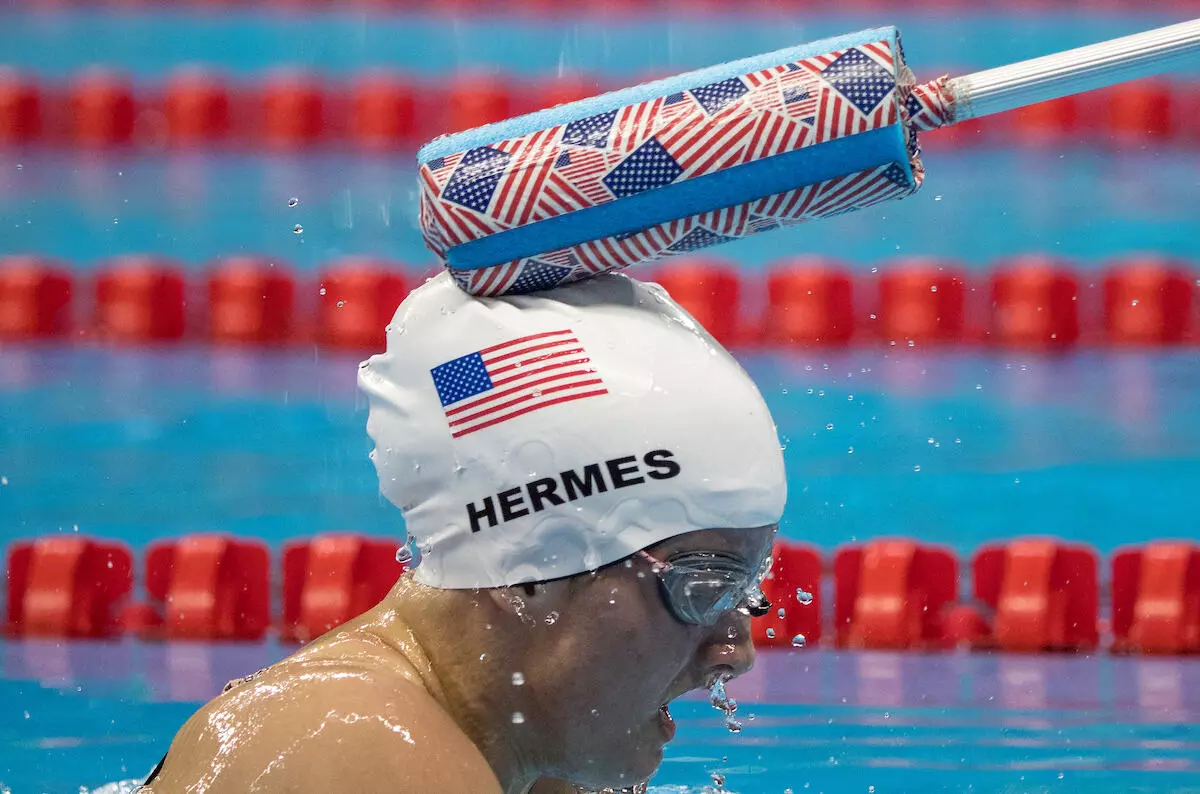Tokyo 2020 Paralympics
Who are Tappers? The guiding light for para-swimmers at the Paralympics
Tappers play a key role in helping the para-swimmers during competition. Here we look at how they function

Tappers play a vital role in helping visually challenged para-swimmers (Sources: Paralympic.org)
A thrilling scene from any Paralympics portrays para-swimmers charging at the wall at high speeds, with adrenaline pumping and their muscles propelling them further. You would notice a person standing at each edge with a soft pole-like device, keenly keeping a watch on the para swimmer's movements, calculating the exact moment that they need to be tapped in order for them to know when to turn. These people are called Tappers and are vital for para-swimmers with visual impairments, helping them avoid a collision. Usually, the tappers are coaches of the swimmers hence helping them know their mentee in and out and allowing them to calculate their movements with decisiveness and tapping them at the right time.
The timing, knowing their mentee's preferences, and repetition are key aspects to being a good tapper. It helps their swimmers make split-second decisions, which sometimes results in the mere seconds' difference between silver and gold. The tap plays a crucial role and eliminates the risk of making potential errors as you may sometimes lose stroke counts during the heat of the moment. Some swimmers prefer the tap on their head, while some prefer it on the back. More often than not, the tapper makes it a hard tap, allowing the swimmer to feel it rather than worry about what could have gone right later on.
Paralympic champion Brad Snyder's Tapper, Brian Loeffler, explains the art of tapping perfectly in an interview to the Paralympics website.
"There are other nuisances with tapping. There's no official tapping device, it's not a standard piece of equipment and is really a homemade device. Some people even use long fishing poles. Brad would tend to use a cane that we could fold up to transport easily, and it usually had a tennis ball at the end. What also varies for each person is that some people like to be struck on the head, and some people like to be stuck on the back. Brad likes the back while Philip(Philip Schultz) likes the head," he said.
Also Read: Types of Prosthetic legs you will see at the Paralympics
The trust between the tapper and the swimmer is key, as both need to have enough confidence in each other to time the tap to perfection.
"Consistency helps the tapper to know my race strategy and what pace I will be coming into the wall. It helps me if the tapper taps at the same point every time. When we get on the same page, the turn should look exactly like an able-bodied swimmer's turn. You shouldn't even be able to tell that I'm blind," replied Paralympic champion Brad Snyder when asked about the trust developed between a tapper and swimmer.
"I think it's really important to have a tapper you trust because you're swimming at a fast rate into the wall, and you have to know that the tapper is going to tap you, and at a point where you're not too far away or close to the wall. Some other folks like a long-tapping device that is sometimes 14 feet long. So they get to tap further out and take a couple of strokes before they flip in. Brad's preference is to be closer so that it's more immediate and he knows when to flip," added Brian.
Also Read: A brief history of India at the Paralympics
The trust and bond formed between the two is key, making it vital for the swimmer to have a tapper who he could trust and know that he would not get distracted in the heat of the moment. The Tapper is not allowed to communicate with the swimmer in any form to avoid giving some swimmers an undue advantage, making it vital for the tapper to track the movements of the swimmer without getting distracted.
"You have to just focus on your swimmer. Don't get distracted with what's going on in the race, where they are in the race or where their competitors are. Don't look at the stands. Your sole job is to focus on them and gauge their speed. It's very much like a relay takeoff. You have to anticipate how fast they're moving, and when the point is when they want to receive the tap. I think some other thing tappers might be afraid of when they're starting out is being too timid. The swimmers need to be struck fairly hard. They would rather be struck hard and feel the tap rather than question oh was that a tap? Or was that a bump on the lane line? Tappers also can't communicate with the swimmers. No words of encouragement or strategy." replied Brian when asked about the do's and dont's that the tapper has to follow while being on the deck.
Also Read: Why were guide dogs present at the Tokyo Paralympics?
The tapper is a vital cog that sometimes may end up being the difference between first and second place for their swimmers.
